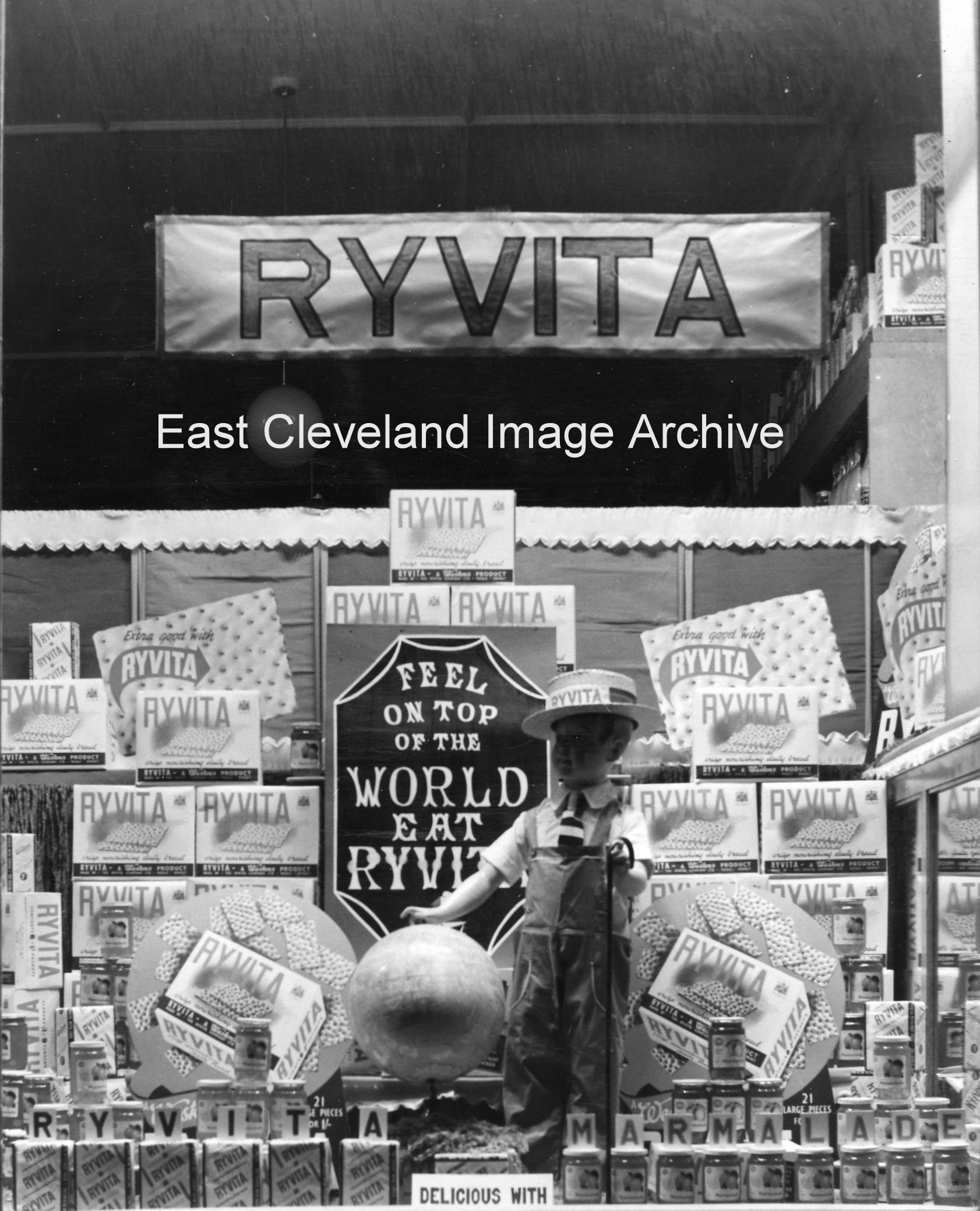
You don’t see windows dressed like this any more, they took a long time to do and you needed a steady hand. Was it the introduction of Ryvita, can you help us were you working there at this time?
Image courtesy of Loftus Town Crier.
|
|
||
 You don’t see windows dressed like this any more, they took a long time to do and you needed a steady hand. Was it the introduction of Ryvita, can you help us were you working there at this time? Image courtesy of Loftus Town Crier. 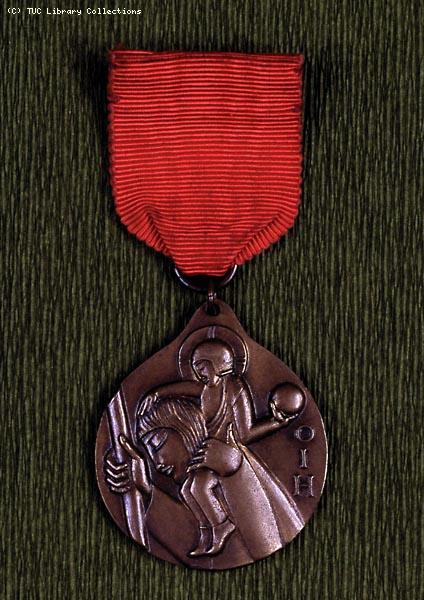 The Daily Herald instituted the Order of Industrial Heroism to recognise the ”Deeds of Valour” of those workers who had saved their fellow workers from danger of death. This became known as the ”Workers V.C.” Many of the recipients were awarded posthumously and also received other awards including the George Cross, George Medal and Royal Humane Society Medal. Just over 400 Workers V.C.s were ever awarded. J.M. Easton (Overman at Loftus Mine, Skinningrove) was presented with the Medal at the Union Council Middlesbrough on 14th December 1946. He was the 177th recipient. Image and information courtesy of TUC.
Pictured at Sandsend with the railway viaduct in the background; the Cubs and Scouts of Sandsend had assembled.
This postcard view of Beckhole – which grew up round an old fording point of the Murk Esk – in Victorian times was much visited having extensive orchards with visitors enjoying the many walks and waterfalls; as well as taking tea beneath the apple trees. 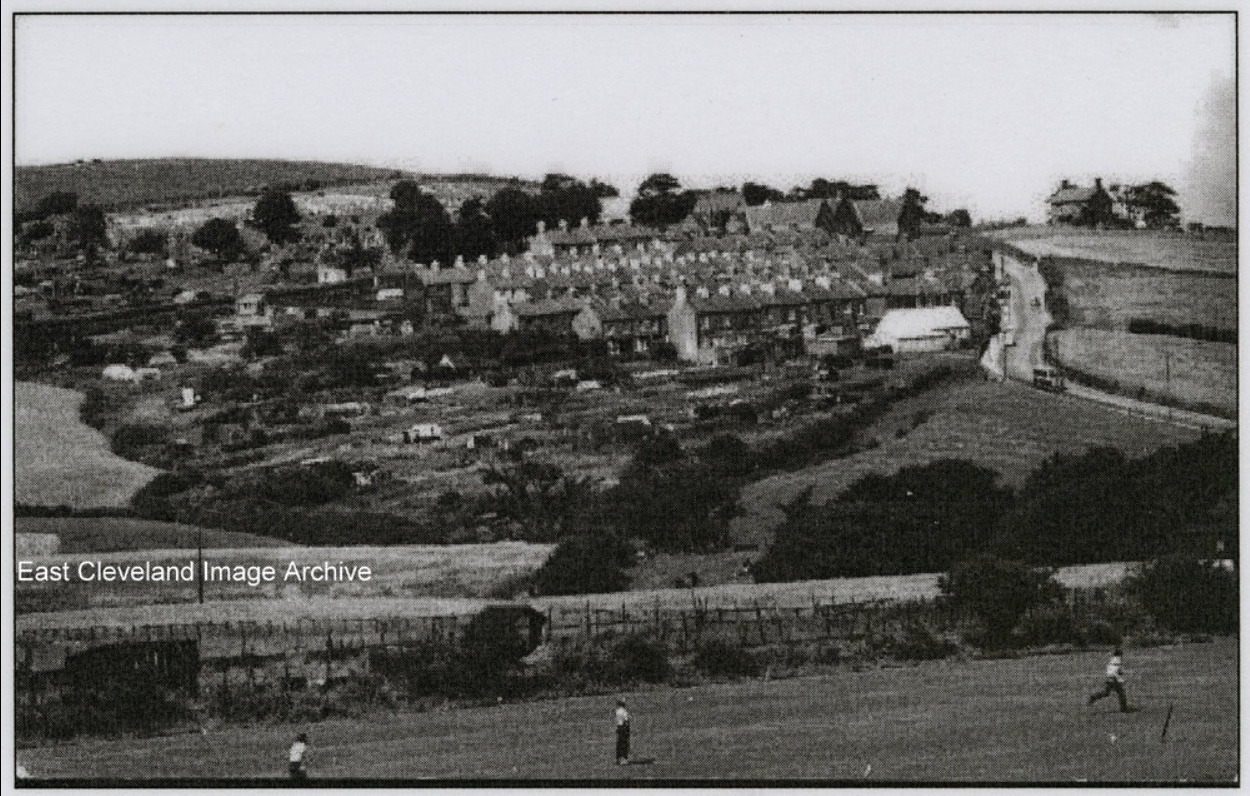 A view of New Skelton from North Skelton (apparently from the shale heap). This in the days of Stanghow Lane Secondary School, now sadly demolished and the chapel sited opposite what is now Byland Road. Dating is unsure so we welcome a suggestion. Peter Appleton has assisted with: “There is a bus going up the road. It looks to be one of those from the 1960s that had a flat front, flat back and rounded corners to the coachwork. All three boys in the foreground are wearing long trousers. Are they still in school uniform? When did long trousers become the normal uniform for lads of this age? The cemetery looks to be fairly full. When was the next extension added?” Can anybody advise on that date? Image courtesy of John G Hannah, thanks to Peter Appleton for the update.. 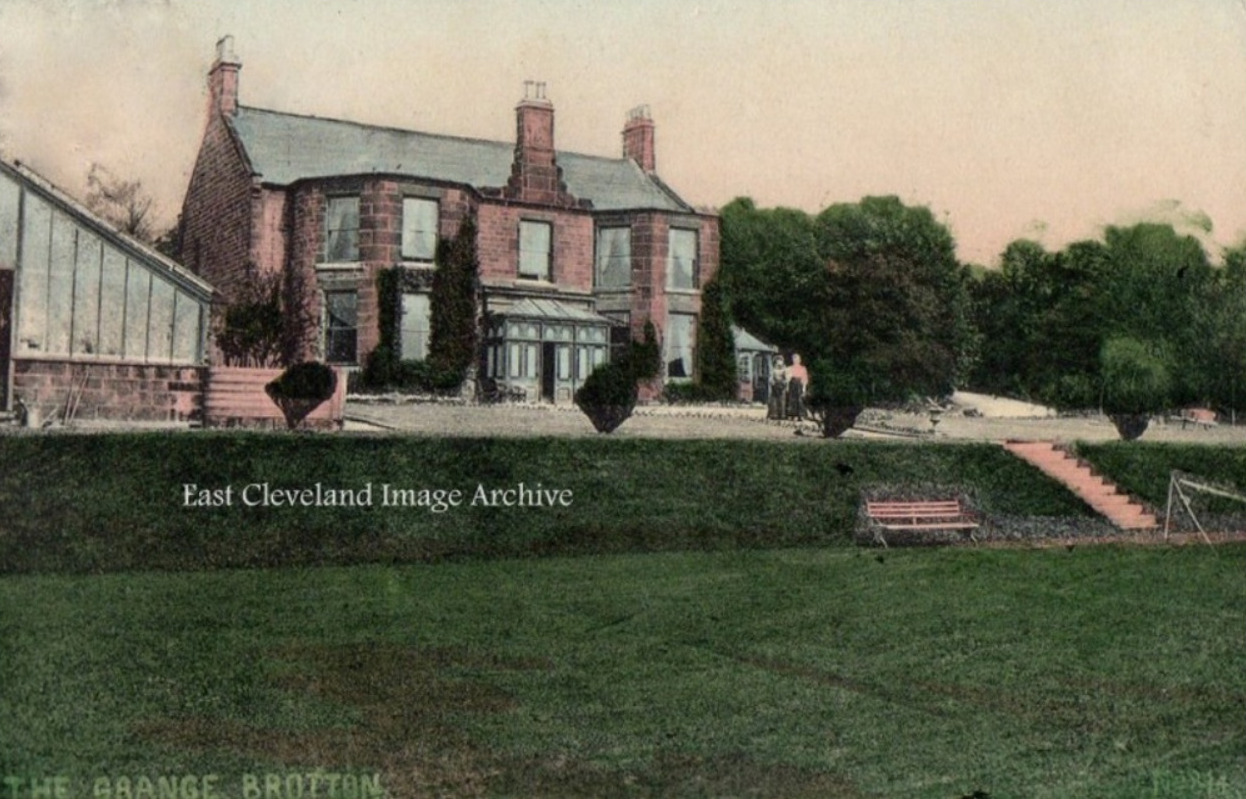 The Grange, Brotton standing on Coach Road was originally the home of Robert Morrison. He started the ironstone mine (Morrison’s Pit) close to his home, from 1881 the house was occupied by Joseph Taylor. Listed in the Census of 1901 as Accountant and Secretary of Brotton Gaslight and Coke Company. The two figures in the postcard image could be Margaret Taylor (wife) or Margaret (daughter) or possibly Beatrice Rush (maid). Roger Hardcastle tells the Archive: ” My great grandfather was a doctor; Thomas Taylor. He had five children and one of them was George, born in 1885 who was my grandfather. It was our branch of the Taylor family that lived in the Grange at Brotton. Going through old photo albums there is a photograph of the Grange”. Charles Taylor advises: “George Taylor was (I believe) the brother of Tom Hugh Taylor who was my grandfather and I have a couple of pictures of gatherings in the Grange garden in which the whole family is shown. Roger Hardcastle is related; as we share the same great grandfather and our grandfathers were siblings”.
A hand tinted postcard view of Danby Castle by Tom Watson of Lythe; although when viewed from the road more resembles a fortified farmhouse! It dates from the early 14th century and was built by Baron le Latimer. It was visited by King Edward II in 1323, Danby Castle; it was and still is a popular postcard theme. Image courtesy of John G Hannah. 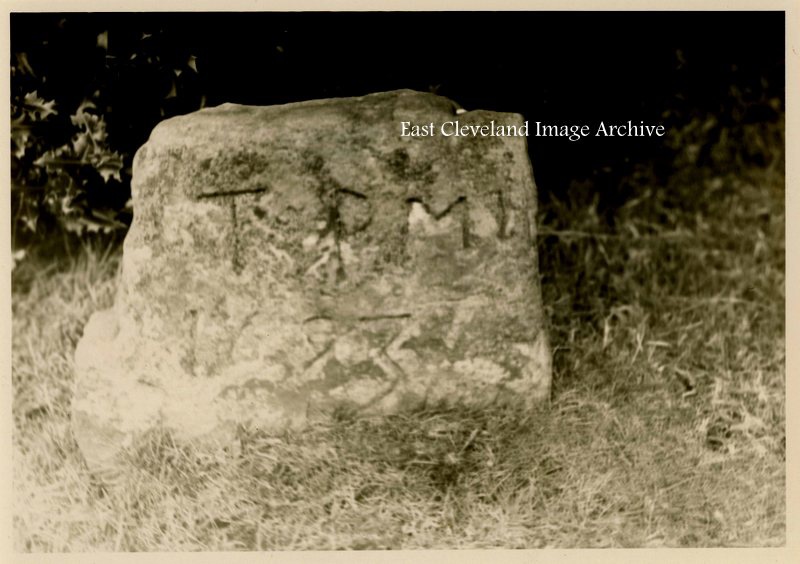 Old Liverton, stone dated 1693; it is now known that the grave is that of Thomas Porritt of Liverton, who died on 1st March 1693. The Quaker burial ground at Liverton is located at Red House farm. Dating from about 1669 to the early 1800’s, it is believed that up to 50 persons are interred there. Little is known about the Society of Friends in the area, But may have started after the visit by the founder George Fox preaching in Cleveland around 1654. Image courtesy of The Pem Holliday Collection, additional information courtesy of Dr Alastair Laurence ’History of Liverton’ and thanks to Alan Jones (who has researched the Liverton Quaker burials) for the headstone information. 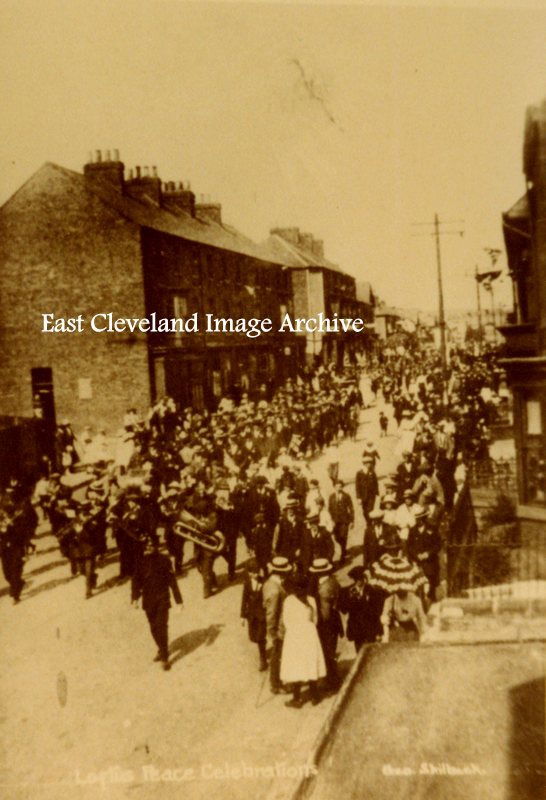 Another George Skilbeck postcard view of the Peace Celebrations in 1918, the parade is approaching the Westfield Terrace junction. Image courtesy of The Pem Holliday Collection.  George Skilbeck took many pictures of the Loftus Peace Celebrations in 1918. This postcard view shows the approach to the Market Place as the parade fills the whole road. |
||
Recent Comments